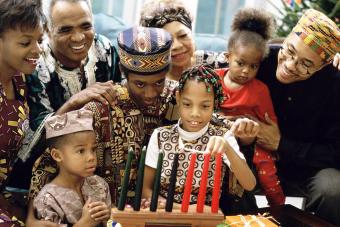
Wordless picture books are tools excellent for introducing babies, toddlers and preschoolers to reading. In older children, imaginations take over and teachers and parents can use activities with the books to help improve reading and writing skills.
Description of Wordless Books
Wordless books are fairly straightforward. They are books without any written narrative to read aloud or to oneself. Occasionally, one may have a single word or expression on one or two pages, but for the most part, they do not contain any written account of the story.
Instead, these books tell a story through illustrations. The pictures are often very detailed and the book's story is played out as each page is turned. Sometimes the illustrations are simple sketches in just a few colors, while other times they are unique collages, vivid paintings or other styles of artwork.
List of Wordless Picture Books
Wordless picture books are typically included with the regular picture books in libraries and bookstores. Some may be featured in special display; a quick visit with a librarian or clerk can often direct parents and teachers to new and classic books, which may include:
- Zoom by Istvan Banyai shows the same picture from different perspectives as readers move through the books.
- Un-Brella by Scott E. Franson follows a little girl whose umbrella holds the key to her own seasonal happiness, no matter what the actual weather is outside.
- Chalk by Bill Thomson is the picture story of children whose chalk drawings come to life.
- The Lion & the Mouse by Jerry Pinkney is a 2010 Caldecott Medal winning book that illustrates a famous Aesop fable.
- Wave by Suzy Lee depicts a young girl's day at the beach.
- Pancakes for Breakfast by Tomie dePaola is the pictorial story of a grandmotherly woman making a pancake meal.
Author Barbara Lehman has several picture books available for young readers and pre-readers. Caldecott Honor recipient, The Red Book, depicts a young girl and boy who watch each other's adventures through their own red books. Other books by Lehman include Rainstorm, The Museum Trip and Trainstop.
Uses for Picture Books
Wordless picture books are great toddler books. They introduce children to books and offer unique and interesting pictures for children to look at without an adult necessary to describe the story. However, it is still fun for an adult to "read" the book to a child, describing things that happen in the pictures. Consider "reading" the story slightly different each time and asking the child to include his or her own observations about the story in each new version. As the child ages, he or she can also tell the story to parents, teachers or siblings.
The uses for picture books without words don't end once a child begins to learn how to read. Picture books teach reading skills, because they teach children about chronology and cause-and-effect. They are excellent read-aloud options for kids who want to share a story but are not yet ready to read words from a book, because the child makes up the words as she or he turns the pages. This is a confidence-building exercise that helps children get comfortable speaking aloud and reading.
Finally, use wordless picture books with older kids as part of creative writing assignments. Hand out picture books to kids, either by themselves or in groups, and have them write the words to go with each picture. Share the different versions aloud in class, noting the different ways each student or group interpreted the illustrations. Discuss reasons why the kids went in their respective directions with the story.
A picture book without words is often included in lists of the best children's picture books. Not every story needs to be written down in order to tell the tale inside.







